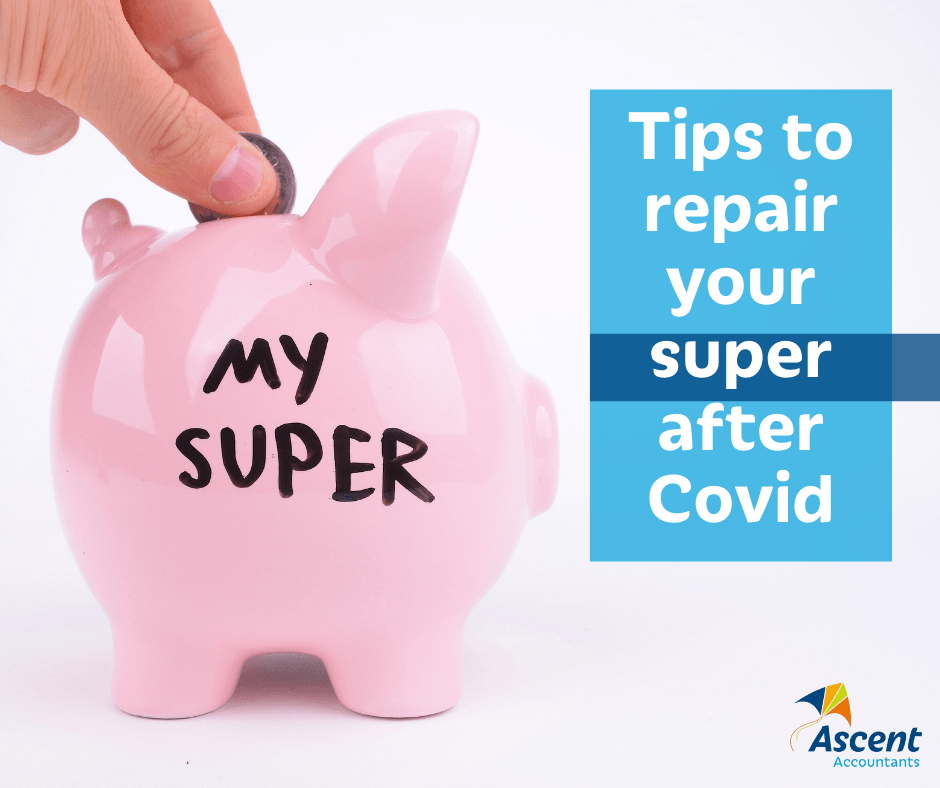How to repair your Superannuationannuation fund if you accessed it during Covid-19

Contribute a lump sum into your superannuation
Have you got a fair amount of savings in the bank that was supposed to go towards a big Europe trip? Or did lockdown encourage a more home-based lifestyle even once things re opened? Maybe you worked on your cooking skills so now spend less money eating out, or you did a deep clean of your home and have sold unwanted and unused items. Well this extra money can contribute to your superannuation.
For the last couple of financial years, the Government has introduced the ability to contribute more than the maximum of $25,000 per year into your superannuation fund by using any of your unused concessional carry forward top-ups, as long as your superannuation balance is less than $500,000. In previous years when the maximum contribution amount was $25,000, that was a definite cap. But now that amount accrues each year, allowing that cap to be much higher. Contributing extra money on top of your employer payments into your superannuation account not only helps rebuild the balance but will also help you receive tax deductions.
Small sacrifices
It has been estimated by BetaShares that a $10,000 withdrawal from a superannuation fund by a person who is 35 could result in a $70,400 deficit in 40 year’s time, using an annual growth rate of 5% plus inflation.
This is a pretty big deficit for what seems like a relatively minor withdrawal in the scheme of things. So, to make up for this, consider setting aside $75 of your pay each fortnight and putting that directly into your superannuation. Over 5 years, with the power of compounding interest, this would see close to $10,000 returned back into your superannuation fund. $37.50 is a relatively small sacrifice to make weekly in order to replenish your superannuation and better set you up for a comfortable retirement.
Spouse
If your partner is unemployed or earns less than $37,000 per year, you are potentially able to claim an 18% tax offset if you personally make a contribution of up to $3000 into their superannuation fund. This benefits both you and your spouse. This being said, there are several eligibilities that need to be considered for this to work, including age restrictions.
Maximise co-contributions and use Government incentives
Another great option is simply popping an extra $1000 of savings of unused superannuation funds back into your superannuation account as a personal contribution. The Government will then potentially boost that payment by $500. To be eligible for this, you must be under 71 years of age and earn less than $38,564 in the different financial year, and have a total balance of superannuation funds less than $1.6 million.
Another Government incentive is if you earn $37,000 or less per year, and you or your employer make concessional superannuation fund contributions, the Government may refund the tax paid on those contributions back into your superannuation fund. This can be up to $500 per year. If you’re eligible for the low income superannuation tax offset, this is automatically calculated and deposited into your account by the ATO once you have lodged your tax return.
Need any more advice on how to repair your superannuation? Please contact us!
Phone: 08 6336 6200
Email: info@ascentwa.com.au
Need help with your accounting?








